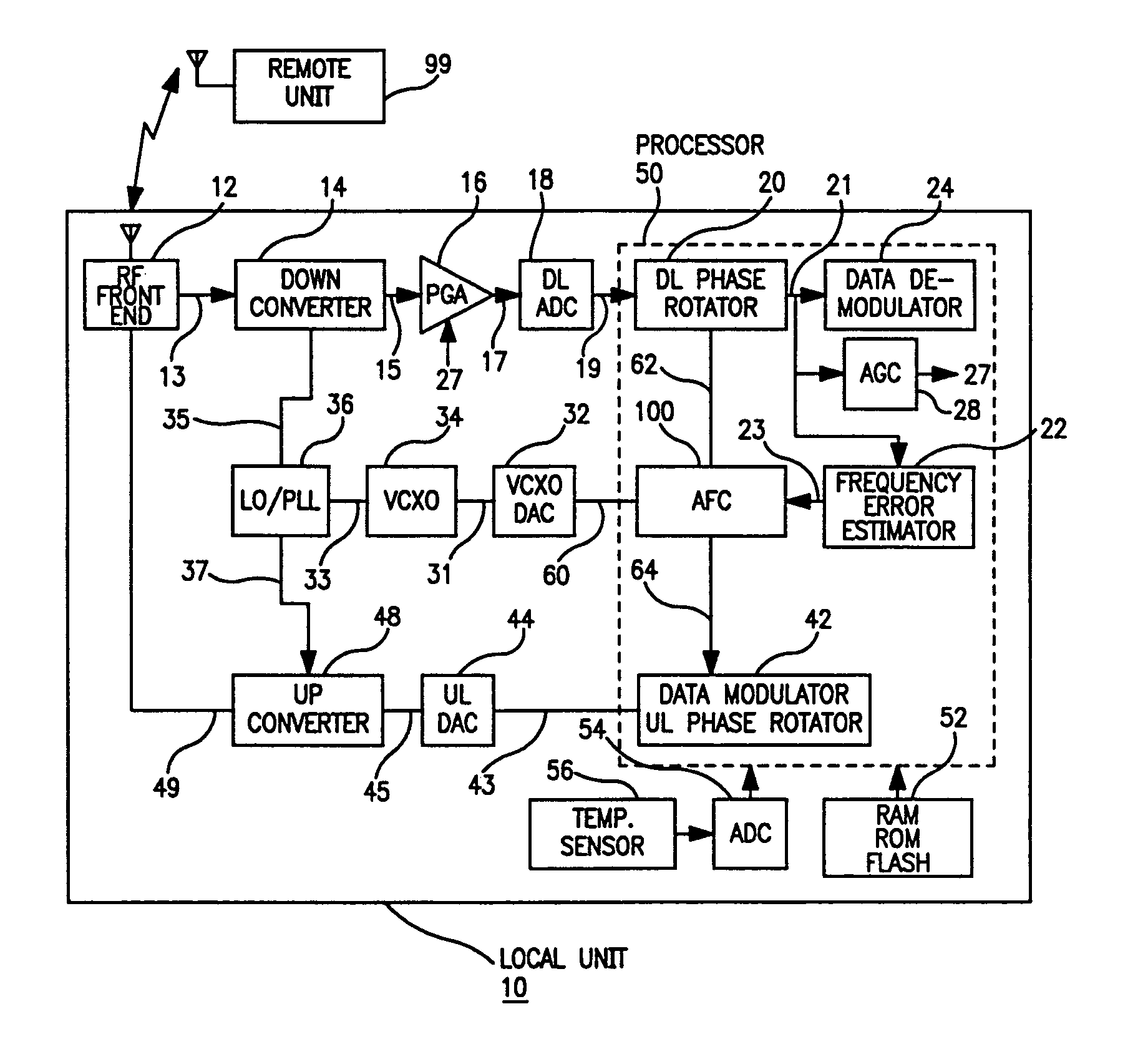Radio frequency control for communication systems
a technology of communication system and radio frequency control, applied in the direction of transmission monitoring, electrial characteristics varying frequency control, duplex signal operation, etc., can solve the problem of vcxo frequency, achieve low cost, improve signal-to-quantization noise ratio, and achieve easy implementation
- Summary
- Abstract
- Description
- Claims
- Application Information
AI Technical Summary
Benefits of technology
Problems solved by technology
Method used
Image
Examples
Embodiment Construction
[0032]FIG. 1 shows a block diagram illustrating the preferred embodiment of the present invention. A local communication unit 10 such as a radiotelephone communicates with a remote communication unit 99 such as a cellular phone base station. In the preferred embodiment the local unit and the remote unit adhere to the Global System for Mobile communications (GSM) standard as an illustrative example. However, the invention is not restricted to the GSM standard and applies more generally to any system in which local unit derives its transmitter and receiver frequency by frequency tracking of radio transmissions from the remote station. Therefore, in FIG. 1 on the downlink transmission from remote to local unit, the radio frequency is one of a plurality of GSM channels allocated in the 935 to 960 MHz frequency band with a channel spacing of 200 KHz. On the uplink transmission from local to remote unit, the radio frequency is one of a plurality of GSM physical channels allocated in the 8...
PUM
 Login to View More
Login to View More Abstract
Description
Claims
Application Information
 Login to View More
Login to View More - R&D
- Intellectual Property
- Life Sciences
- Materials
- Tech Scout
- Unparalleled Data Quality
- Higher Quality Content
- 60% Fewer Hallucinations
Browse by: Latest US Patents, China's latest patents, Technical Efficacy Thesaurus, Application Domain, Technology Topic, Popular Technical Reports.
© 2025 PatSnap. All rights reserved.Legal|Privacy policy|Modern Slavery Act Transparency Statement|Sitemap|About US| Contact US: help@patsnap.com



